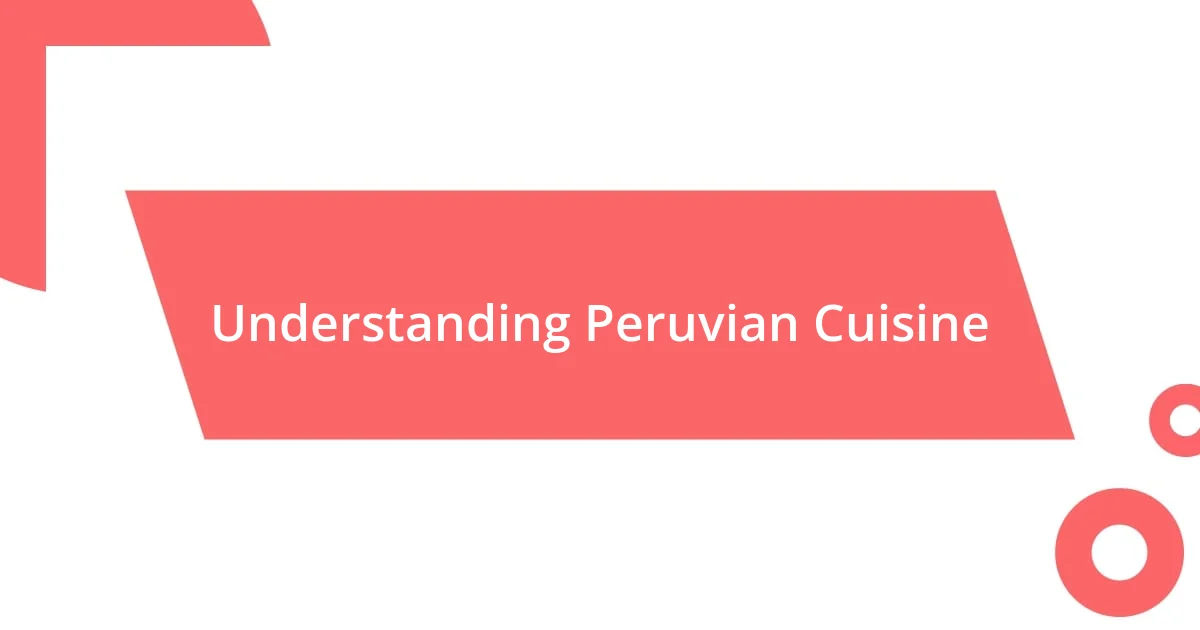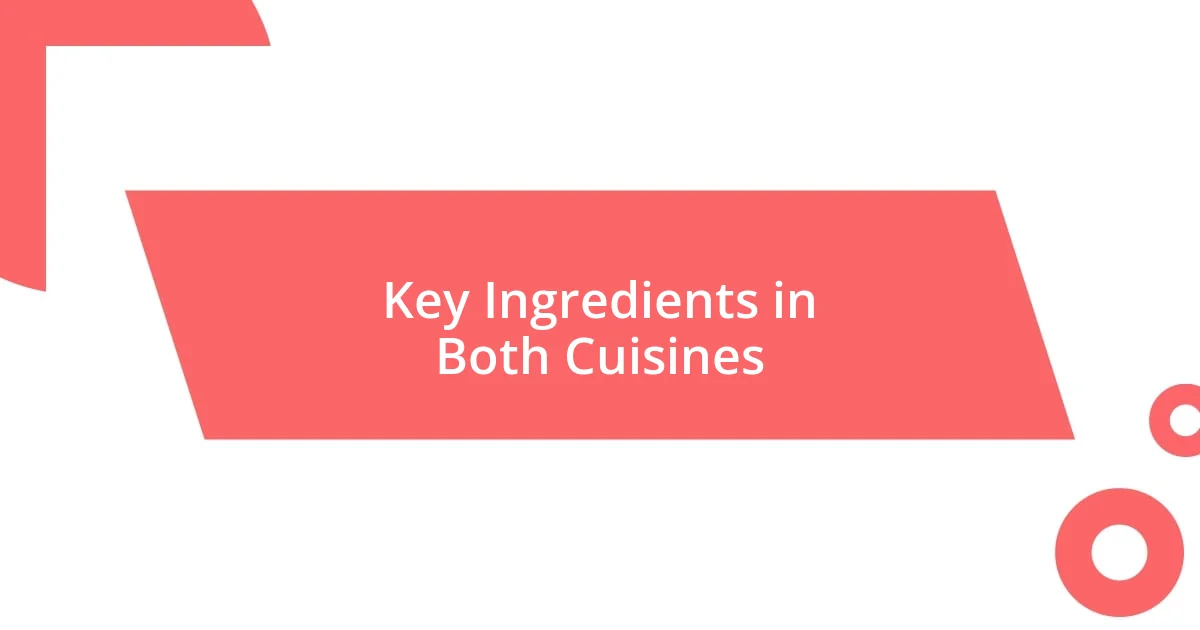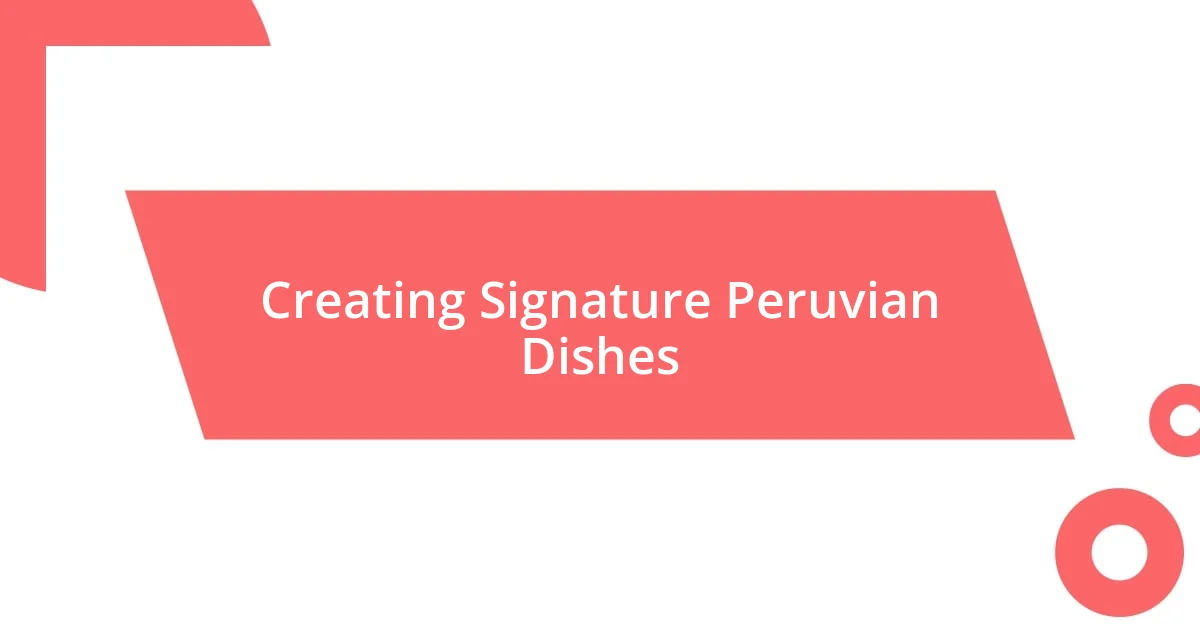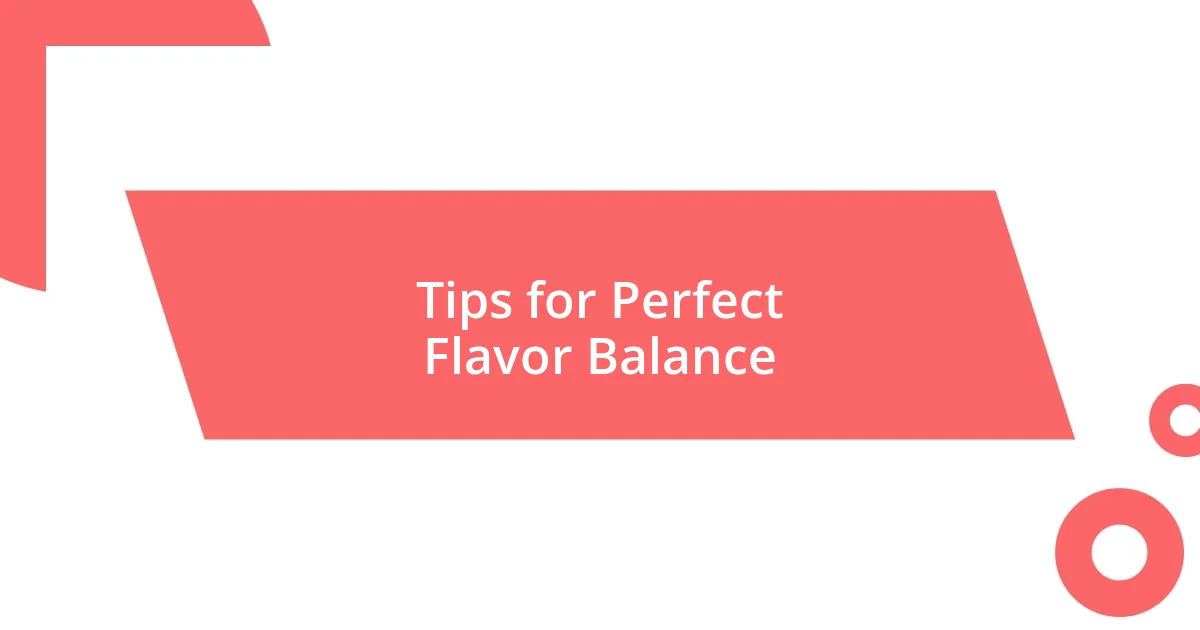Key takeaways:
- Peruvian cuisine is deeply influenced by its diverse cultural heritage, using unique ingredients like lime, quinoa, and ají peppers to create vibrant dishes that tell a story.
- Caribbean flavors, characterized by ingredients like jerk seasoning, coconut milk, and plantains, evoke strong emotional connections and transport consumers to tropical settings.
- Balancing acidity, sweetness, and texture is crucial in blending flavors from both cuisines, enhancing the overall culinary experience and fostering communal enjoyment around meals.

Understanding Peruvian Cuisine
Peruvian cuisine is a vibrant tapestry woven from the diverse cultures that have influenced the country. I remember the first time I tasted ceviche; the combination of fresh fish, zesty lime, and just a touch of chili created an explosion of flavors that danced on my palate. Isn’t it amazing how a simple dish can tell a story of coastal traditions?
The roots of Peruvian food run deep, reflecting its indigenous heritage alongside Spanish, African, and Asian influences. Each ingredient feels like a conversation between these cultures, creating dishes that are not just meals but an experience. I often think about how food connects us — have you ever felt a surge of nostalgia from a familiar aroma wafting through the air?
Furthermore, Peru is known for its unique ingredients, like quinoa and ají peppers, which are integral to authentic dishes. When I first learned about ají amarillo, it transformed the way I viewed spice. It’s not just about heat; it’s about the depth and brightness it brings to a dish. Have you explored how different spices can elevate your cooking?

Exploring Caribbean Flavors
Caribbean flavors are a vibrant mix that transport you to sunlit beaches and swaying palm trees. The moment I took a bite of spicy jerk chicken, the smoky aroma and fiery heat whisked me away to Jamaica. There’s something truly magical about how these bold flavors can evoke a sense of place and emotion.
- Pimento and thyme: These herbs provide a signature depth in Caribbean cooking, often seen in marinades and stews.
- Coconut milk: A staple that adds creaminess and richness, lending a tropical feel to dishes like curries.
- Scotch bonnet peppers: Their intense heat is balanced by a fruity undertone, ensuring every bite is punchy and memorable.
- Plantains: Whether fried, boiled, or baked, they’re a versatile side that complements savory meals and desserts alike.
- Rum: Integral to Caribbean culture, it’s not just a drink; it infuses a unique sweetness into many dishes, from glazes to desserts.
As I experiment with these bold elements, I find myself falling in love with each layer of flavor. Mixing them brings warmth and a sense of community, inviting everyone to gather around the table and share in the experience.

Key Ingredients in Both Cuisines
When diving into the key ingredients of both Peruvian and Caribbean cuisines, a few essentials shine brightly. For instance, while both cuisines celebrate the brightness of citrus, Peruvian food often hinges on lime for its distinct ceviche, whereas Caribbean cooking revels in the sweet tang of fresh lime or orange juice to marinate meats. I recall a delightful afternoon preparing a marinated fish dish, where the citrus blended seamlessly amid the fragrant spices. Isn’t it delightful how such a simple ingredient can elevate a dish?
Moreover, staples like rice and beans play pivotal roles in both cultures but in different forms. In the Caribbean, you’d typically find beans cooked alongside rice to create that hearty comfort, while Peruvian cuisine may present them as a side dish, complementing the main star of the plate. Each tells a story of sustenance and community. One evening, as I shared a steaming bowl of rice and beans with friends, I realized these humble ingredients foster connections, drawing everyone around the table.
Lastly, the variety of peppers in both cuisines is fascinating. Peruvian ají peppers like ají amarillo offer a vibrant heat and flavor, while Caribbean scotch bonnets bring a fiery fruitiness that packs a punch. I’ve often experimented by incorporating both peppers into my recipes, and what a revelation it has been! The balance offers complexity, creating layers of taste that make every meal memorable. Can you remember a time when you tried blending two ingredients and were pleasantly surprised by the results?
| Key Ingredients | Peruvian Cuisine | Caribbean Cuisine |
|---|---|---|
| Citrus | Lime for ceviche | Lime or orange for marinades |
| Staple Grains | Rice as a side | Rice and beans cooked together |
| Pepper Varieties | Ají peppers for heat | Scotch bonnet peppers for fruity spice |

Techniques for Flavor Blending
I’ve discovered that marinating is an essential technique in flavor blending. When I first experimented with a marinade combining Peruvian citrus and Caribbean spices, I was taken aback by how the flavors danced together. The acidity from the lime not only tenderized the meat but also created a wonderful balance with the smoky and spicy notes. Have you ever witnessed the transformation that occurs when ingredients spend time together? It’s magical!
Another technique that has become a favorite of mine is layering flavors through cooking methods. For instance, when making a stew, I often start by sautéing onions, garlic, and ginger, allowing those aromatic foundations to bloom. Then, I’ll gradually stir in ají peppers for depth and finish with a splash of coconut milk for that creamy finish. It’s fascinating how each step builds on the last, resulting in a harmonious dish. Isn’t it incredible how cooking can be an art form, where every choice alters the final masterpiece?
Finally, I love the technique of contrasting temperatures, especially when I plate a dish. Imagine a vibrant ceviche topped with crispy fried plantains: the cool, zesty fish plays perfectly off the warm, comforting crunch of plantains. This contrast evokes not just taste, but also a mix of textures and sensations. It’s a sensory experience that encourages sharing and conversation, making meals feel like a celebration. Have you tried mixing hot and cold elements in your dishes? The results can be surprisingly delightful!

Creating Signature Peruvian Dishes
Creating signature Peruvian dishes starts with embracing the unique flavors that define the cuisine. One dish I enjoy making is a classic Lomo Saltado, where I toss marinated strips of beef with onions and tomatoes and serve it over rice. The high-heat stir-frying infuses the dish with delightful smokiness, and it’s fascinating how this simple technique can transform ingredients into a memory. Have you ever experienced that moment when a familiar dish brings a rush of nostalgia?
Another favorite of mine is the much-loved Aji de Gallina. The creaminess of the yellow chili sauce paired with tender shredded chicken feels like a warm hug. I often prepare this dish during family gatherings, and I love watching everyone gather around to savor it together. The way that sauce envelops the chicken reminds me of the comfort my grandma’s recipes always provided—food that nourishes both the body and the heart. Isn’t it remarkable how certain flavors can evoke such strong emotions?
When I step outside traditional recipes, I like to experiment by incorporating unexpected elements, like adding tropical fruits to ceviche. One time, I tossed in some diced mango, and it created a beautiful contrast with the sour notes of lime and the heat of the ají. The sweet surprise not only delighted my taste buds but also sparked conversations at the dinner table, as everyone rushed to experience the new twist together. Isn’t it incredible how playing with flavors can lead to joyful discoveries?

Incorporating Caribbean Elements
Incorporating Caribbean elements into my cooking has opened up a world of flavor possibilities. One of my favorite secrets is using ingredients like coconut and allspice. I remember the first time I added coconut milk to my Peruvian causa. The creamy richness paired with the lemony, potato base created a delightful melding of flavors that took the classic dish to new heights. Have you ever noticed how a single addition can revolutionize a recipe?
I also adore the vibrant spices of the Caribbean, especially when roasting vegetables or meats. The first time I rubbed jerk seasoning on chicken and grilled it alongside Peruvian corn, I was amazed at how the smoky heat complemented the sweet kernels. There’s something exhilarating about experimenting with spice profiles from different cultures. It makes me wonder, how can a burst of flavor transport us to another place, almost as if we’re savoring the essence of a tropical island?
Then there’s the world of fresh herbs, which I can’t overlook. I love combining fresh cilantro, often associated with Peruvian cuisine, with the bright notes of thyme or parsley from the Caribbean. When I made a chimichurri-like sauce infused with those herbs to drizzle over grilled fish, the result was an explosion of freshness that my family couldn’t stop raving about. Don’t you find it fascinating how certain combinations can evoke such feelings of adventure and creativity in the kitchen?

Tips for Perfect Flavor Balance
Finding the perfect flavor balance between Peruvian and Caribbean dishes often involves careful consideration of acidity and sweetness. I remember creating a vibrant salsa using Peruvian rocoto peppers and ripe Caribbean pineapples. The fiery heat from the pepper, softened by the natural sweetness of the pineapple, brought an exhilarating harmony that awakened my taste buds. How do you feel when a single bite makes you smile?
Another tip is to be mindful of textures as well as flavors. I once experimented by adding crunchy plantain chips to a creamy Peruvian tiradito. The contrast of flavors and textures was so delightful that it sparked conversations about how food can surprise us. Isn’t it intriguing how a dish can encapsulate different experiences in one bite?
Make sure to taste as you go. One of my favorite moments was when I was blending a new marinade for grilled seafood. I had a batch that felt off until I added just a touch of lime juice; that bright, zesty kick made everything click into place. It reminded me that sometimes balance is about adjusting in small ways—what adjustments have you made that took a dish from good to incredible?















